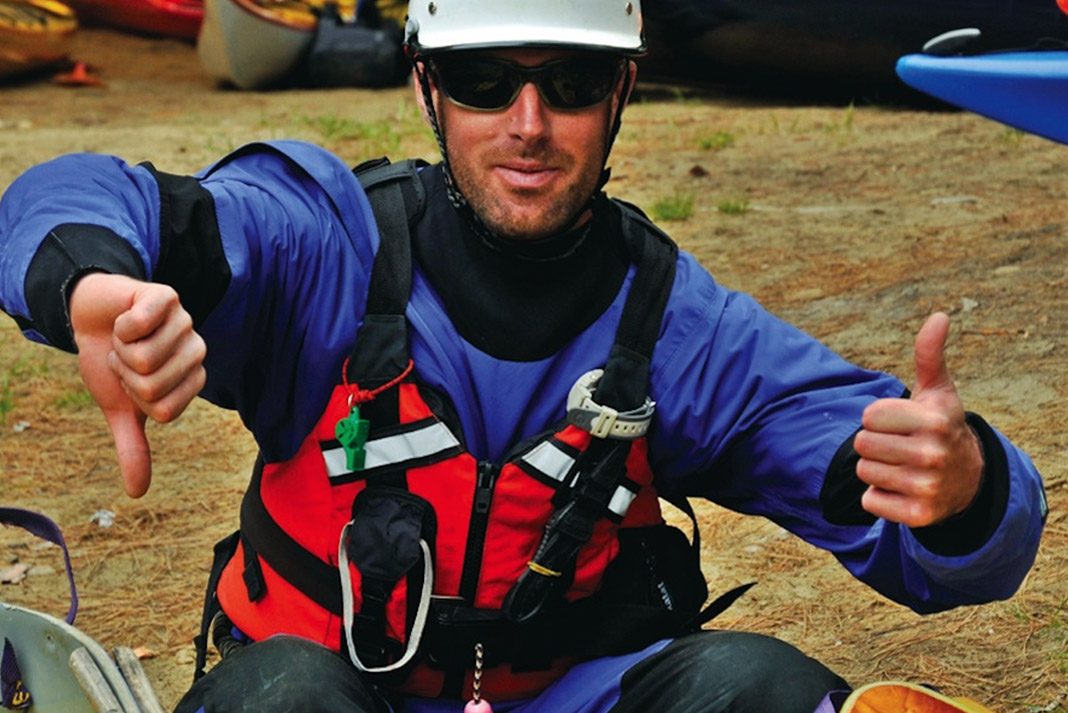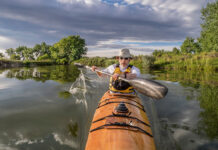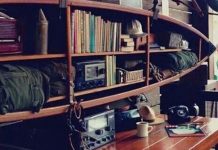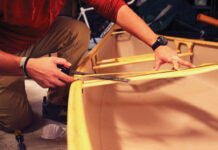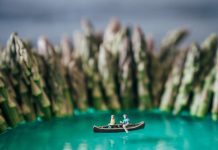There’s no reason to let auto buffs, washed up MTV hip hop artists and the Teutul dynasty have all the custom mods fun. Even un-tattooed, decidedly un-Teutuliar open boaters can reap the benefits of home tuning. And it doesn’t have to cost a rapper’s squandered fortune.
Take a lesson from the budget strokers and rice burners in the pages of Car Craft and Import Tuner and do more with less. Replacing a couple $5 thigh strap anchors, or spending just five minutes adjusting said straps correctly, can make your old beater perform as well as the slickest new digger and have you hanging louies, roscoes and U-turns—er, S-turns—with the best.
Here are some performance- and appearance-enhancing suggestions for whitewater canoe outfitting from canoeing Modfather Brian Shields.
1. Performance bucket seats
The saddle is your primary connection point with the boat. Use pieces of closed cell foam and contact cement to widen the saddle by an inch or so on each side to prevent sliding around on the seat. Create an even more secure feeling by gluing small foam wedges on the top edges of the saddle to make a custom bucket seat. Shag optional.
2. Clear coat and flames
Plastic paint in aerosol cans is readily available in most standard canoe colours. Restore a worn hull by painting just the bottom where the outer layer of ABS has worn away. If you can’t find your hull colour, use flat black and mask a symmetrically shaped area to allow you to paint just below the waterline. Or get bold and creative with air brushing, pin stripes, flames or metal flake to produce a one-of-a-kind show boat.
3. Material matters
Ultra-light, super-tough nylon floatation bags are must-have upgrades from vinyl beasts. Nylon bags take the heat better than vinyl, expanding rather than exploding. Nylon is also much nicer to work with, staying flexible in cool weather, and easy to deflate and stuff in your gear bag when transporting your boat. Harmony 3D End Bags come in three sizes: 30-, 54- and 60-inch. Buy bags that fill your cages to displace as much water as possible.
4. Transformer
Master playboat multi-day tripping with this mod. Using quick-release clips, create access openings in your float bag cage so you can carry gear on longer cruises. Start by sewing or gluing short loops of webbing onto webbing clips. Then cut your existing float bag cage cord and thread it through these loops.
5. Custom trim
Wooden gunwales are the granddaddy of canoe mods. Once you paddle with wood, everything else feels like an ‘81 diesel Jetta towing a Jayco Haul-All travel trailer.
6. Bobbed thwarts
The existing thwarts in most canoes are way over-engineered. The forces on the thwart when paddling are compressive, so 3⁄4-inch square material is all you need. This cuts the weight by nearly half and improves the appearance dramatically. Round over a straight-grained piece of cherry or ash, leaving just the ends square to improve fit under the gunwales.
Be warned, however; just as chopped roof struts and urethane body panels can reduce the structural integrity of street rods, scaled-down thwarts aren’t suitable for the paddler who portages like a rampaging Godzilla and exits his canoe like an Outfit crime boss splitting a chop shop bust.
7. Chop shop
Deck plates have no function except to hide the outfitting knots. Remove them and send them to the recyclers. Then tie neater knots. However, if you have wooden gunwales, you can install custom wood deck plates that—like aftermarket body kits and spoilers—do nothing for the performance of your ride, but look oh-so-hot. Choose a piece of wood with a grain you like, set it on the ends of the boat and mark the outline on the underside. Cut just outside the pencil line with a jigsaw and do the final precise fitting with a wood rasp. Just as quick and satisfying as a Ched ‘R’ Pepper burger at the Sonic Drive-In.
8. Lowrider
Lowering the saddle greatly improves stability. Try going down to an 8-inch saddle height. Bold paddlers with excellent joint flexibility can tolerate seats as low as 6 inches. Remove the saddle and trim off the desired amount using a band saw, or work top-down with a rasp. Aging and arthritic paddlers and those who enjoy a loftier perch can ignore this mod.
9. Lift kit
If your knees lift excessively when you’re strapped in, consider moving the anchors forward so the knee straps pass over your leg closer to your kneecap. A new set of anchors is inexpensive and helps make you one with your boat. Embracing tip #8 will also reduce knee lift.
10. Retention and retrofit
Avoid strap slip when rolling and bracing by checking to see if your thigh straps are installed with the wide, padded portion up and the strap completely contacting your leg (rather than hanging ineffectively in the air). Thigh straps are often installed or adjusted incorrectly, an oversight that—as with brake shoes, steering arms and sub woofers—tends to result in spectacular blowouts.
11. Suspension package
A lower seat results in paddling with your instep flat—kinesthetically disagreeable for all but the most elastic of boaters. Support your shins with hollowed-out minicell foam blocks glued to the floor with contact cement. There’s no sense in sporting a pimped-out ride if you can’t pull off the swagger to match. Warning! Paddling with your instep flat can result in your toes extending underneath the foot pegs and has resulted in foot entrapments. Rivet plastic plate extensions on your foot pegs to prevent this, or rip them out and install foam toe blocks instead.
12. Aftermarket accessories
Install a yoke in your tandem playboat… all those trippers can’t be wrong. Humping 55 pounds again and again to the top of the set can feel a lot more like work than play. A yoke leaves you with energy left over to paddle. Fine, sculpted cherry will make you smile every time you look at it—and at the frugal non-tuners nursing backaches at day’s end.
13. H2O in the trunk
Tired of your water bottle rolling around your knees on a carabiner? Modfathers know the best place to stash fuel—be it a cylinder of nitrous or a Nalgene of water—is in the trunk. Remove the rear seat block on your saddle, carve out a bottle-sized channel with a band saw or router, replace the block and hold the bottle in place with a bungee cord bolted through the foam. Or use a fret saw to cut your bottle bunkie in situ.
14. Bodywork
Using scrap material (broken hockey sticks work well) for temporary thwarts, experiment with various hull shapes. The stability of smaller, flat-hulled boats like the Esquif Zoom improves by lengthening the rear thwart by an inch and shortening the bow thwart by half that. Hulls that are rounded and soft chined are seldom improved from factory specs. Making them wider just makes it harder to reach the water. Narrowing them can cause stability to disappear entirely.
Brian Shields has been fine-tuning floating toys for 13 years, making handsome boats fit happy paddlers.


